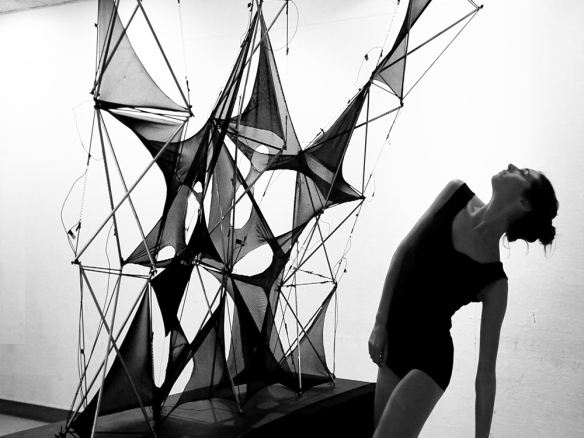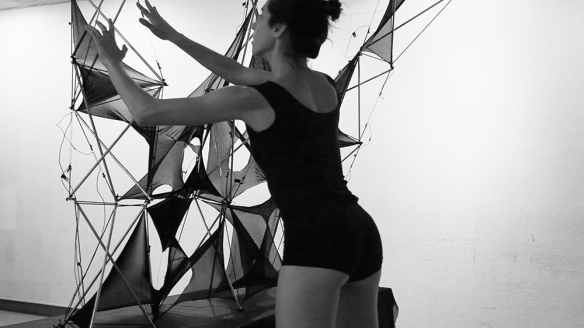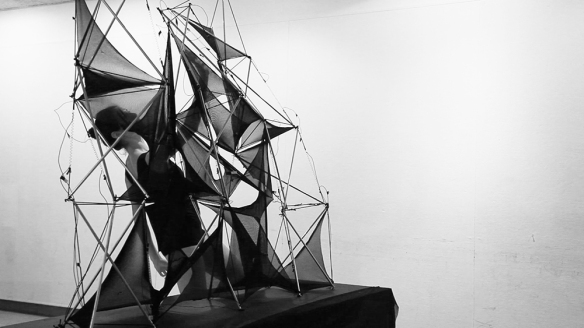The reality is that the technology we use today is constantly learning and catering to our needs, and learning and responding to us. Apple collects endless amounts of data every time you use your iphone, but what about our surroundings what if they learned and changed to how we live? Behnaz Farahi work at the University of Southern California challenged how a surface can interact and adapt to the way we inhabit space. The surface begins to shift and bend as the inhabitant moves around and away from the surface. The project uses kinetic motion sensors to react to the location of the inhabitant, but what if that structure adapted to our daily routines? Check it out after the jump!
STUDENT: Behnaz Farahi
SCHOOL: University of Southern California
YEAR: 2013
“How might we imagine a space that—over time—can build up an understanding of its users through their bodily gestures, visual expressions and rituals of behavior, and respond accordingly? In other words, how might we envision a genuinely interactive space whose form and physical configuration can respond to and learn from its users, and vice versa?
Alloplastic Architecture I Final Design + Process from Behnaz Farahi on Vimeo.
This project addresses these questions. It looks at the interface between remote sensing, interactive media and architecture to explore the possibility of an interactive environment that both conditions and responds to the user’s movements and emotions. The impulse behind the project is a desire to engage with the psychological benefits of an environment that can respond to—and therefore empathize with—human emotions through its capacity to adapt physically to the user. As such, the environment can be seen to overcome shock or conditions of alienation by accommodating the user. Such an architecture could be described as an “alloplastic architecture.”
Tensegrity structures are, of course, nothing new. What is new, however, is the potential for these structures to adapt and change their form. In this project I used Shape Memory Alloy [SMA] springs and other devices that have come to operate as “muscles” that can realign a structure within a constant overall equilibrium that is maintained as other springs or expandable elements adjust their length to compensate for that initial movement, thereby re-configuring the entire structure. Another device that was explored in this project was the use of the kinetic motion sensing device. Not only can this device begin to recognize bodily movements and judge distance and depth, but it also has the capacity to learn from users and adapt to them with time.
Midterm Thesis Presentation from Behnaz Farahi on Vimeo.
This research therefore addresses the potential of a reciprocal transformation between a user and an architectural element, whereby the environment can influence the user, but equally the user can also influence the environment. It also engages with a series of interdisciplinary challenges, ranging from a technological grasp of how such environments might be able to change morphologically to a psychological and neurological grasp of how human beings might themselves respond to those changes, and become active agents in remodeling and redesigning those environments.” – Behnaz Farahi
All Images and Text via:
Behnaz Farahi Vimeo – http://vimeo.com/user14873666
http://www.suckerpunchdaily.com/2013/03/18/alloplastic-architecture/




I am a 3rd year architecture student from India and what you have done is exceptional. I would really like to learn all about it in detail. I have always thought of our environment to be more “understanding” of us and malleable to our needs and requirements, something truly organic achieved by synthetics. I really wish to work on something with similar concepts.I truly am your fan.